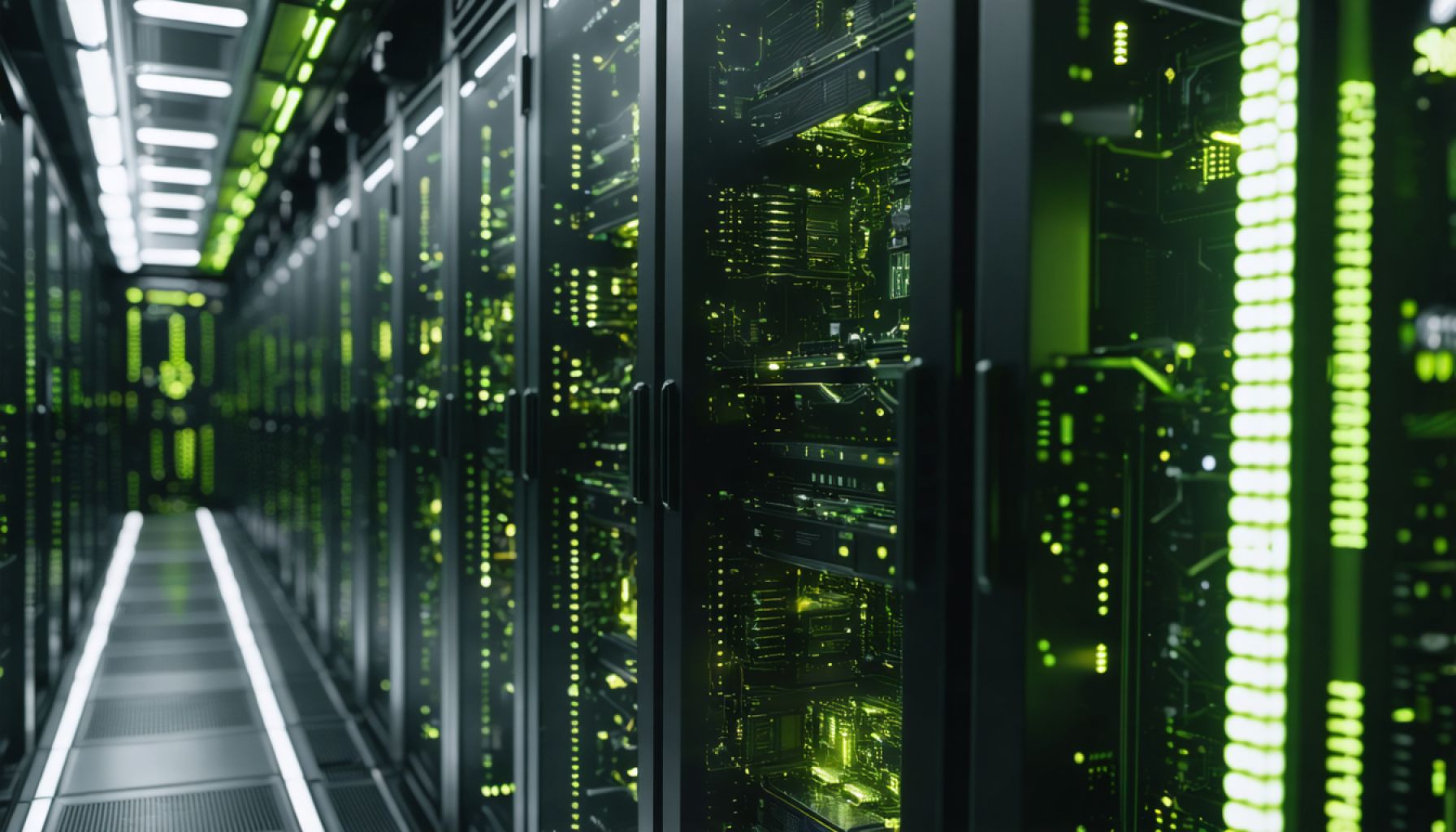- Nvidia plans to manufacture AI supercomputers in the U.S., marking a significant shift in America’s tech landscape.
- The initiative involves a $500 billion investment over four years, focusing on facilities in Arizona and Texas.
- Key partners include TSMC, Amkor, and Siliconware Precision Industries for critical support in production.
- This move is strategically aligned with global trade shifts and potential new semiconductor tariffs.
- Nvidia’s “digital twin” factories will revolutionize manufacturing through advanced automation and AI.
- The initiative highlights the intertwined future of technology and labor markets amidst AI evolution.
- Overall, Nvidia’s strategy exemplifies the balance of innovation and foresight amid complex trade dynamics.
Nvidia, a titan of AI chipmaking, has unveiled a groundbreaking initiative that could redefine America’s role in the high-tech landscape. For the first time, Nvidia plans to manufacture its sought-after AI supercomputers on American soil—a strategic decision that reflects both visionary foresight and a robust response to shifting global trade winds.
Envision a future where the hum of cutting-edge factories in Arizona and Texas merges with the vibrant energy of the American tech industry. Nvidia’s monumental commitment of producing up to $500 billion worth of AI infrastructure in the United States over the next four years comes with formidable alliances. It has already tapped Taiwan Semiconductor Manufacturing Company (TSMC), a global leader in chip production, and other key players like Amkor and Siliconware Precision Industries for pivotal support in packaging and testing.
This decision arrives against a backdrop of geopolitical maneuvering that has seen the Trump administration imposing hefty tariffs on foreign products—a move designed to bolster domestic manufacturing but fraught with economic complexity. While Trump’s administration levied substantial tariffs on Chinese goods, tech components such as chips and smartphones were strategically shielded from these economic barriers. As whispers of new semiconductor tariffs loom, Nvidia’s decision to fortify its manufacturing base in the U.S. emerges as a timely counterbalance and a potential buffer against the uncertainties of trade policy.
The technological odyssey doesn’t stop at production. Nvidia’s factories, envisioned as “digital twins,” promise to revolutionize manufacturing through sophisticated automation and AI-driven robots—ushering in a new era of innovation. These cutting-edge facilities are not just about infrastructure; they herald a transformative shift in how complex technologies like Nvidia’s AI chips are conceived and constructed.
Coupled with the broader implications of AI and automation—where reports have suggested that nearly 800 million jobs could pivot or vanish by 2030—Nvidia’s initiative underscores the intertwined destinies of technology and labor markets. As these AI supercomputers take form on American soil, the initiative speaks to a wider narrative of resilience and adaptation.
In the shimmering landscape of tech evolution, Nvidia’s bold move presents a compelling chapter. It’s a testament not just to the company’s ingenuity but also to the critical balance of innovation and strategic foresight in navigating the complexities of modern global trade dynamics.
Nvidia’s Revolutionary Step: Manufacturing AI Supercomputers in the U.S.
Nvidia’s announcement to manufacture AI supercomputers domestically marks a significant pivot in the U.S. tech industry landscape. This strategy not only highlights Nvidia’s adaptability but also suggests a larger trend towards localizing high-tech manufacturing. Below, we delve deeper into this strategic shift, exploring its implications, opportunities, and challenges.
How Nvidia’s Decision Impacts the U.S. Tech Landscape
1. Economic Implications
– Job Creation: This initiative is set to generate thousands of jobs across Arizona and Texas, significantly boosting local economies and fostering tech hubs in these areas.
– Supply Chain Resilience: By manufacturing in the U.S., Nvidia reduces reliance on international supply chains, which can be vulnerable to geopolitical tensions. This move is strategic, providing a buffer against global trade disruptions.
2. The Role of AI and Automation
– Digital Twins in Manufacturing: Nvidia plans to use ‘digital twins’—virtual replicas of physical assets—to enhance production efficiency and accuracy. This involves sophisticated AI-driven technologies optimizing factory operations.
– Impact on Employment: While automation might reduce certain jobs, it will also create new roles in tech management, oversight, and maintenance, requiring a skilled workforce adept in AI and robotics.
3. Market Forecasts & Industry Trends
– AI Chip Industry Growth: The global AI chip market is projected to increase significantly. According to Grand View Research, it was valued at approximately $10 billion in 2020 and is expected to expand at a compound annual growth rate (CAGR) of 39.6% from 2021 to 2028.
– Future Competitive Edge: Local production gives Nvidia a competitive edge in terms of faster time-to-market and the ability to rapidly innovate, responding quickly to emerging technological demands.
4. Pros & Cons Overview
– Pros:
– Enhanced national security by reducing dependency on foreign manufacturers.
– Greater innovation potential with proximity to other tech innovators in the U.S.
– Cons:
– High operational costs in the U.S. compared to other countries with cheaper labor and materials.
– Potential challenges in adapting to U.S. regulatory frameworks.
Real-World Use Cases
– Custom AI Solutions: Businesses seeking customized AI solutions can benefit from quicker turnaround times and collaboration opportunities with Nvidia’s U.S.-based operations.
– Partnership Opportunities: Local manufacturers and tech companies might find opportunities to partner with Nvidia, enhancing their technological offerings.
Actionable Recommendations for Tech Professionals
– Skill Development: With increasing automation, professionals should upskill in AI, robotics, and data management to remain competitive.
– Networking: Tech startups and existing companies should explore partnerships with Nvidia to leverage new technologies and shared expertise.
– Monitoring Industry Trends: Keeping an eye on geopolitical shifts and trade policies can provide insights into tech production shifts and opportunities.
Conclusion
Nvidia’s move to build AI supercomputers in the U.S. is not just a business decision; it’s a strategic alignment with current global and domestic technological and economic trends. This initiative underscores the convergence of innovation, talent, and economic foresight amidst evolving global complexities.
For further exploration of Nvidia’s innovations and updates, visit Nvidia’s official site.
